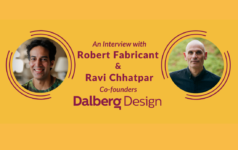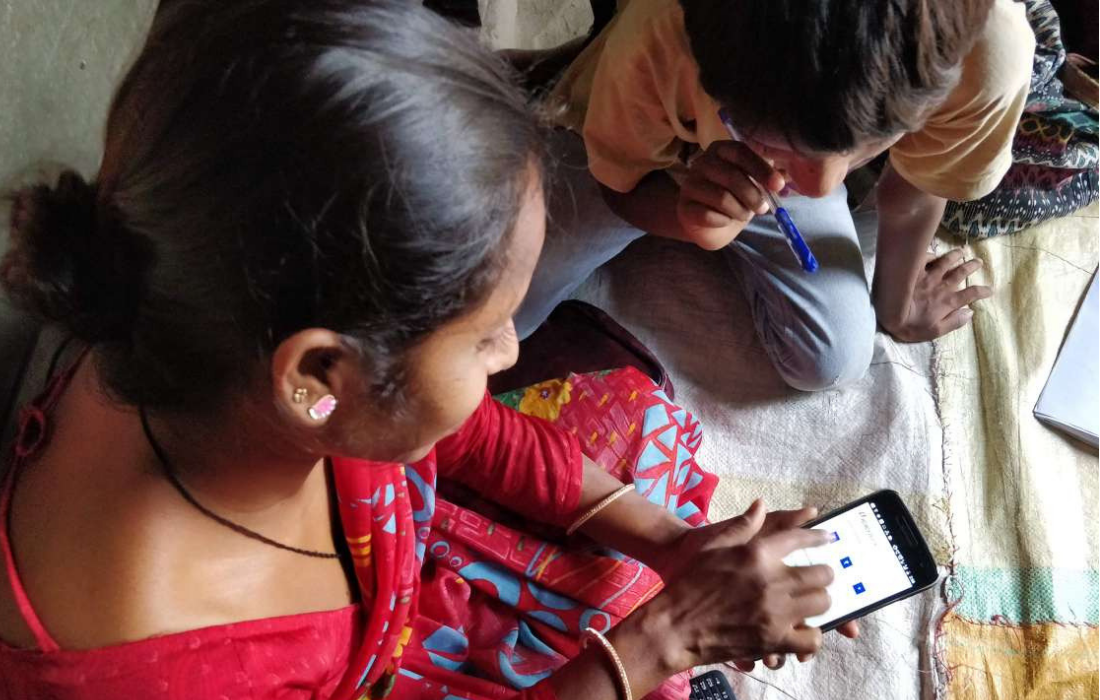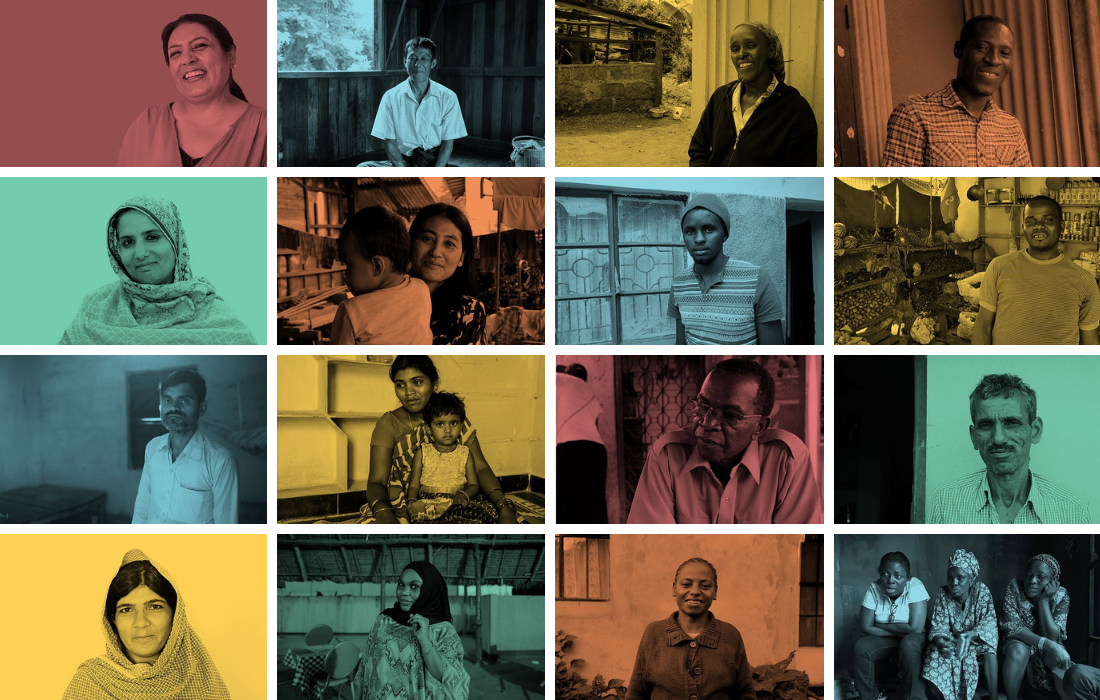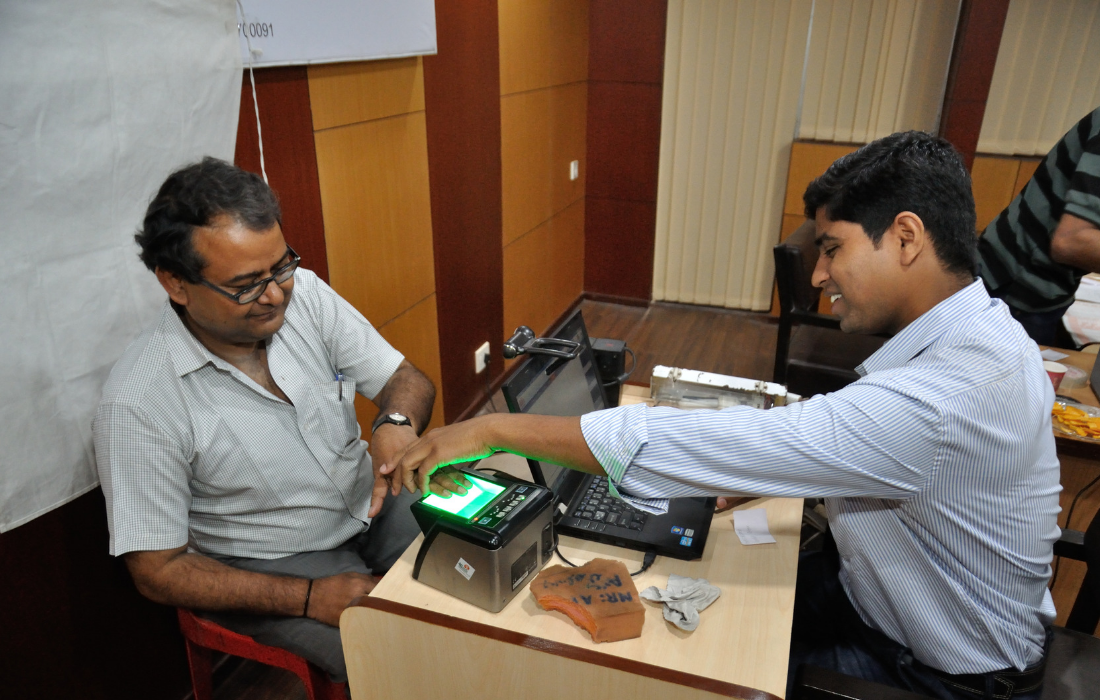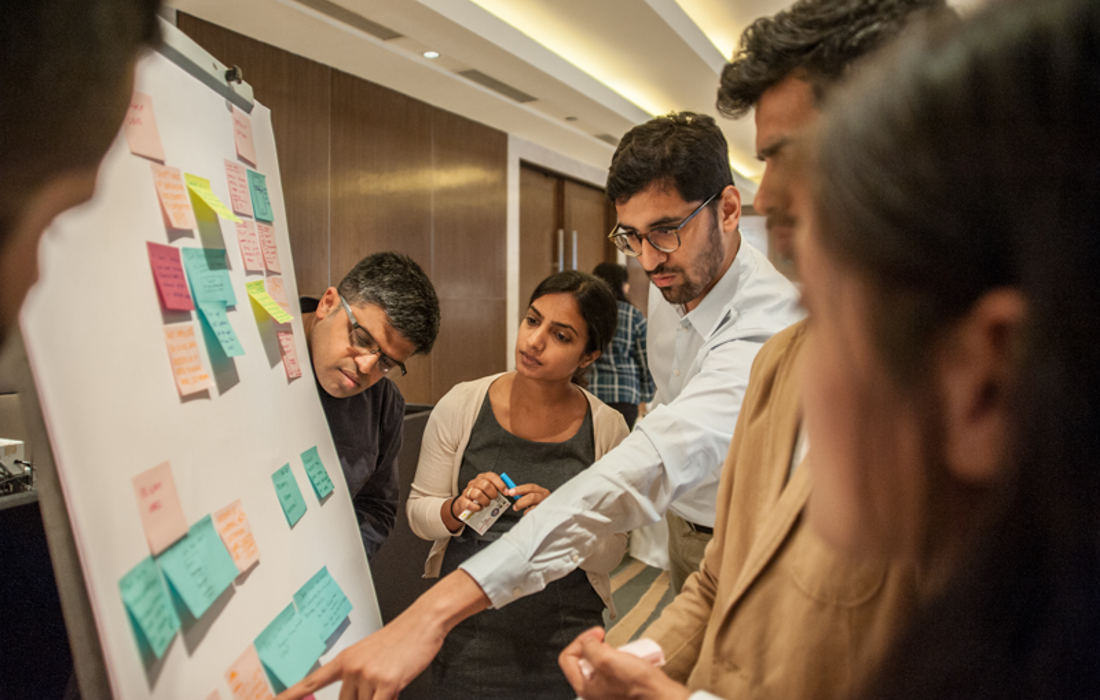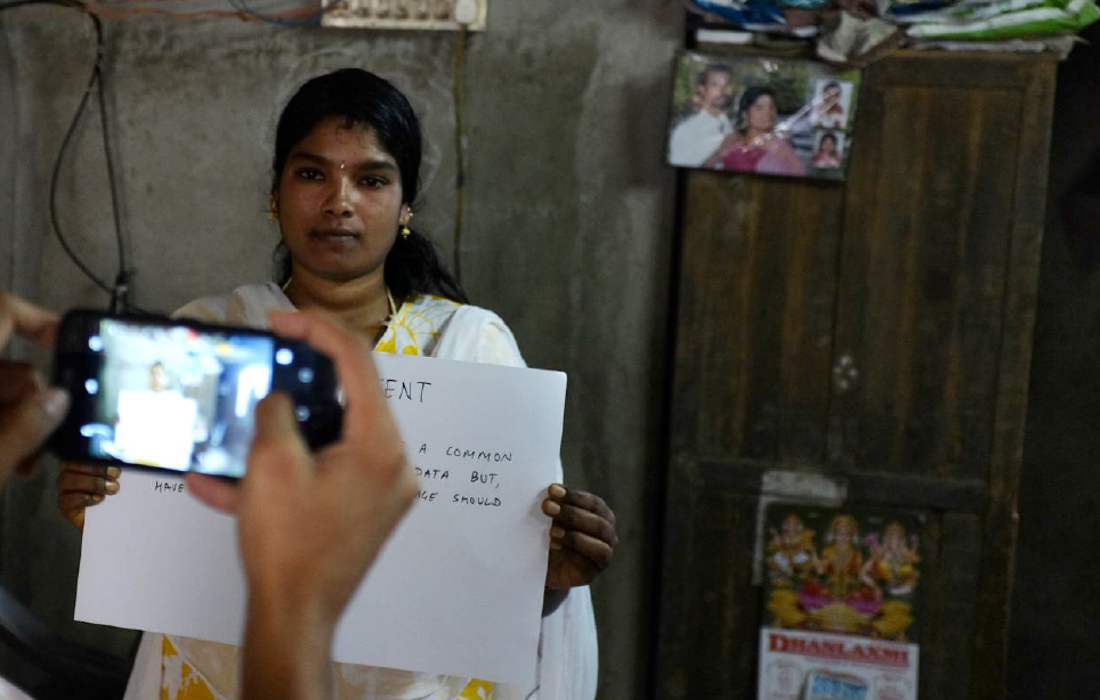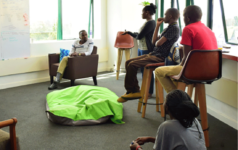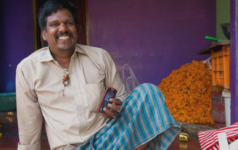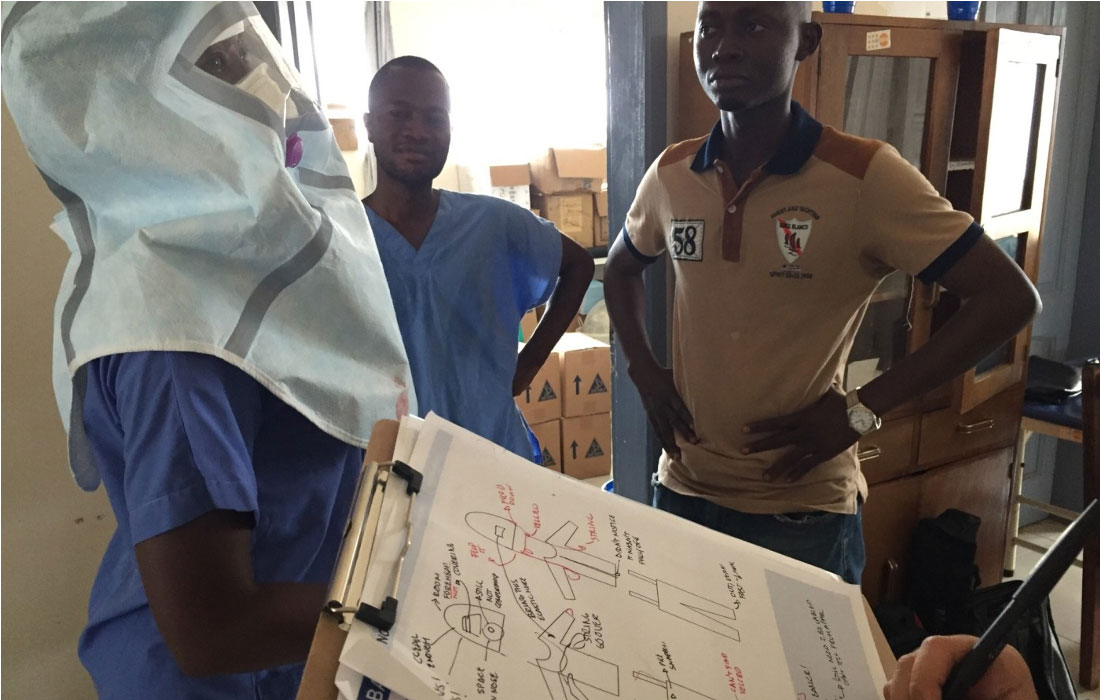Dalberg uses cookies and related technologies to improve the way the site functions. A cookie is a text file that is stored on your device. We use these text files for functionality such as to analyze our traffic or to personalize content. You can easily control how we use cookies on your device by adjusting the settings below, and you may also change those settings at any time by visiting our privacy policy page.
By Robert Fabricant, Co-Founder of Dalberg Design, and Christopher Fabian, Co-Founder of UNICEF’s Innovation Unit. This article was originally published in the Stanford Social Innovation Review.
Technology is all about making new stuff, agility and adaptability, and knowing what’s next. It’s fast. It’s cool. It wears a hoodie.
International development deals in systems and measurements to help shift government policies. It’s slow. It’s big. It wears cufflinks.
Each field has its own language and ethics. How do you work with beneficiaries (or users)? How do you conduct monitoring and evaluation (or A/B tests)? What does it mean to implement (or deploy)? These lexicons don’t always connect—and when they don’t, we see wasted effort and the potential to lose real global change.
An ethical framework—“a way of structuring your deliberation about ethical questions”—can help to bridge disparate worlds and discourses and help them work well together. Ethical questions might include: “Is this platform / product actually providing a social good?” or “Am I harming/including the user in the creation of this new solution?” or even “Do I have a right to be taking claim of this space at all?” This helps us form value-based collaborations—and allows us to better assess and monitor our work.
Here, we propose an ethical framework—very much a strategy or structure—based on nine principles (operational tactics and measurements) that UNICEF and other development sector actors developed and adopted. Building on their work, our framework includes a set of four cross-cutting values and statements that innovators can use to negotiate between the competing priorities and objectives of startup business and international development.
INNOVATION IN INTERNATIONAL DEVELOPMENT
In the dominant model of international development, targets such as the United Nation’s Millennium Development Goals are created and managed centrally, and measured globally. International development professionals try to agree on these goals, and then work to coordinate the big systems needed to make progress against them.
In recent years, many people in international development (inside and outside of the United Nations) have added a powerful new word to their discourse: innovation. The term carries many meanings, all of which seem far from the realm of three-year project plans, SWOT analyses, monitoring and evaluation, and logical frameworks (log frames).
In development, innovation most often means:
- Working fast and flexibly like a Silicon Valley startup (process)
- Incorporating the latest technologies to transform the way we engage populations and measure everything (technology)
- Taking user needs into account, make sure that solutions reflect real user needs (design)
- New models of shared value partnership, thinking more like an ‘incubator’ than a serial-process driven system (investing)
We’ve used these appealing words and concepts extensively in pushing for new design and development models in our own organizations. But while Silicon Valley has proven that “creating multi-disciplinary teams” and “failing quickly” add value to Facebook and Google, have we been able to prove that “agility” (for example) adds real value to large-scale human development?
“INVENTION SAVES LIVES”
As the international development community draws on the technology community’s language of innovation, private sector technology community itself is starting to approach the world of life-saving innovations.
The designers and technologists that created the personal gadgets, connectivity platforms, and Internet-enabled culture of sharing we use today are creating another portfolio of inventions that have largely charitable or humanitarian aims. A significant portion of these inventions target the most basic human technologies: toilets, water filters, smokeless indoor stoves. These efforts, though new, often 1) don’t see user growth, 2) are focused on advances in engineering and manufacturing rather than systemic change, and 3) start and end as ideas or prototypes.
What happens when the preeminent tech investors and inventors of our age take on this mantle and design directly for the global poor? What are the dangers of “disruption” when dealing with vulnerable populations’ lives? Should we use the same metrics to evaluate new releases of technological platforms as we do for social change?
BRIDGING TWO WORLDS
Here is a summary of the ethical framework we propose for guiding and evaluating innovation projects:
- Innovation is humanistic: solving big problems through human ingenuity, imagination and entrepreneurialism that can come from anywhere
- Innovation is non-hierarchical: drawing ideas from many different sources and incubating small, agile teams to test and iterate on them with user feedback
- Innovation is participatory: designing with (not for) real people.
- Innovation is sustainable: building skills even if most individual endeavors will ultimately fail in their societal goals
This basic framework is helpful when it is used to spur questions about specfic initiatives, which cross the spaces of technology, business, and development—questions such as:
- How do we take advantage of global knowledge, technology and expertise to solve enormous problems without imposing a paternalistic model on the solution or those who benefit from it?
- How do we design in an inclusive and participatory manner, when resource and power dynamics are so unequal?
- How do we address persistent problems that defy a single clever invention and require sustained engagement, learning, iteration, and adaptation? (Imagine if Google left its original Spreadsheets application alone, thrown up its hands, and said, “Well, people either use it or not.”)
- How do we take advantage of capital markets as paths to scale, while recognizing that they are not inherently humanistic or ethical?
- How do we account for the potentially destructive results of innovations five or ten years from now without completely shutting down the sort of risk-taking that is essential to the creative process?
THE JOURNEY TO A SET OF VALUES
UNICEF’s Innovation Labs provide a good example of a values-based approach to problem-solving that effectively bridges technology and development. The labs fit into a growing constellation of tech hubs in the developing world and share the space with private-sector labs. (Many technology corporations are setting up their own labs—fueled by investments from technology giants, and modeled on Bay Area startup incubators—in the belief that having a footprint in the developing world innovation space is enough to inspire network growth or turn up new opportunities for core business.)
One of the reasons that UNICEF set up labs was to create a way to engage problem solvers in a space where problems are not just about a better product or single-pointed solution, but also about systemic changes that run from individual to community to national government and beyond.
UNICEF’s labs create a translation layer between startup thinking (“If I could make this one thing better, then people would use my product”) and development thinking (“If we can create a systems-level argument and fully monitor all aspects of our change, that change will become institutionalized over time”). These are simplifications of both systems, but the dichotomy is clear.
Without pathways to scale or market, many great ideas get lost. As Steve Davis of PATH puts it, “The ‘iPods’ of poverty alleviation and literacy have likely been invented and put to use by small organizations in some corner of the globe, but there is no market for identifying these breakthrough ideas and ensuring widespread adoption.” UNICEF intends its labs to work as APIs between small local innovators, and global systems of policy-making and scale.
These labs represent an important new physical layer in the innovation ecosystem by combining private-sector entrepreneurialism with broader societal needs. Structures like this can be effective in building a community with the skills and capacity to innovate, regardless of whether individual technologies or product ideas deliver on their promise.
However, they still constitute only one layer, and the strata around them needs to be balanced to ensure that innovations from within the network are authentic, fair, and useful. Set up correctly, labs move away from hierarchical structures for solving big problems and toward more-participatory engagements with potential consumers of those solutions (inspired by our close partnership with the global product strategy and design firm frog). In many ways, they are a physical metaphor for (and instantiation of) this ethical framework.
SHIFTING THE PARADIGM
In-country innovation teams, labs, localization, and research units represent a fundamental shift in the paradigm of innovation in development by dismantling the often modern, often Western distinction between business activity and social good.
Local (but global) labs also represent a fundamental shift toward a more human-centric approach to problem solving grounded in human needs, insights, and ingenuity. People’s needs are not neatly packaged up into commerce and social good. Similarly, they are not neatly divided between saving money and getting medicine for a sick kid or transport to a job site. Building one class of products for “consumers” and another for “those in need” creates false divides, as well as products that are neither sustainable nor scalable.
SOME BACKGROUND: NINE PRINCIPLES
The thinking in this article and the ethical framework itself stems from a set of operational principles and specific thesis statements that a group of development, design, and technology experts have been building over the past two years. They include:
- Design with the user.
- Understand the existing ecosystem.
- Design for scale.
- Build for sustainability.
- Be data driven.
- Use open standards, open data, open source, and open innovation.
- Reuse and improve.
- Do no harm.
- Be collaborative.
IN PRACTICE
UNICEF’s deployment of RapidPro—a flagship, open-source platform for moving information quickly using simple mobile phones—offers another example of putting these principles to work. As the organization developed RapidPro, it faced a choice: traditional development or tech-driven innovation. In an attempt to bridge the two, (and through its Innovation Labs), RapidPro is basing development on non-hierarchical, participatory, sustainable, and humanistic design:
- Non-hierarchical: RapidPro has a management structure that looks like a tech startup (business development, operations, sales, engineering, and design), but each part of that structure sits in a different innovation lab.
- Participatory: Teams develop features and applications in the field, at the point of use, with people who will eventually use the system.
- Sustainable: The code and platform are entirely open source (AGPL), and vendors across five continents and a dedicated open-source community will support it.
- Humanistic: A real-time information platform is important to the private sector (where are my shipments? customers?) and public sector (where are services? those in need?), and the problems it solves are applicable to every country in the world.
By aligning the purpose and processes behind building RapidPro, UNICEF is creating platform that seems to fit this emerging model of global development, but more importantly, it has created ecosystems around the platform (and its services) in more than 30 countries. This would not have been possible using either of the traditional approaches, or without innovation, technology, and business partners such as frog.
This is only one example of such an approach. There is a rising tide of interest from organizations such as internet.org to move beyond individual product innovations, and plug into broader platforms and systems that can have a massive impact on poverty and health.
CONCLUSION
All collaboration is difficult, because the languages and principles behind these fields have been developed independently and over time. But by working together, the fields of technology, business, and development can create bigger change than by working separately.
A framework for discourse and collaboration, and a shared ethics around approach, are necessary to make certain that there is a common vision and that great innovations can have the best impact on the world’s most marginalized populations.


